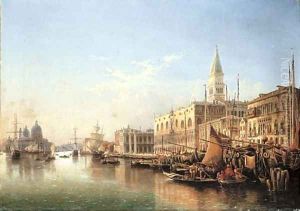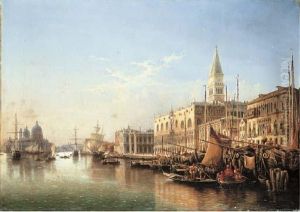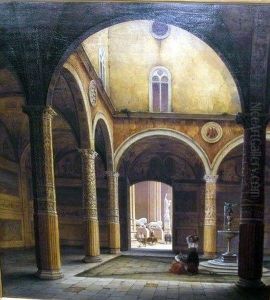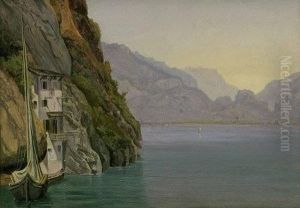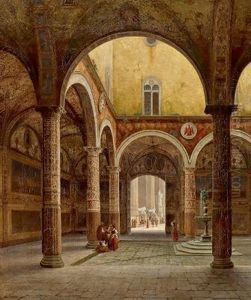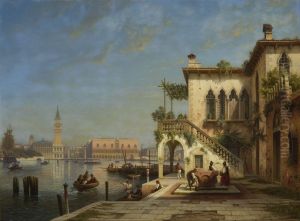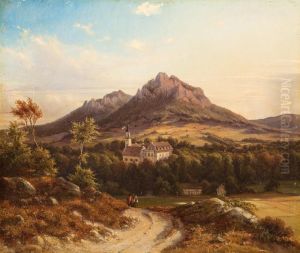Julius Helfft Paintings
Julius Helfft was a German painter, born in 1818 in Berlin, Germany, and passed away in 1894. He is known for his detailed and atmospheric landscapes, architectural paintings, and interior scenes, which reflect the Romantic movement's influence during the 19th century. Helfft's artistry was deeply rooted in the tradition of German Romantic painters, and he was particularly adept at capturing the interplay of light and shadow, imbuing his works with a sense of mood and emotion.
After receiving his initial artistic training in Berlin, Helfft further honed his skills by traveling and studying the works of other artists across Europe. This period of travel was crucial for his artistic development, allowing him to absorb various influences and refine his technique. Despite being less widely recognized than some of his contemporaries, Helfft's contributions to the German art scene were significant, and his works were appreciated for their meticulous detail and composition.
Throughout his career, Helfft exhibited his works in various art shows and galleries, receiving accolades for his ability to convey not just the physical characteristics of a scene, but its inherent atmosphere as well. His paintings often depicted scenes from his travels, including landscapes of the German countryside and views of European cities, executed with precision and a keen eye for detail.
Although Julius Helfft may not be a household name today, his paintings are held in several collections and museums, appreciated by connoisseurs of 19th-century German art. His legacy is that of a skilled painter who captured the essence of his time and place with a delicate and masterful touch. Helfft's work continues to be studied and admired for its contribution to the Romantic movement and its portrayal of the natural and architectural beauty of Europe.
